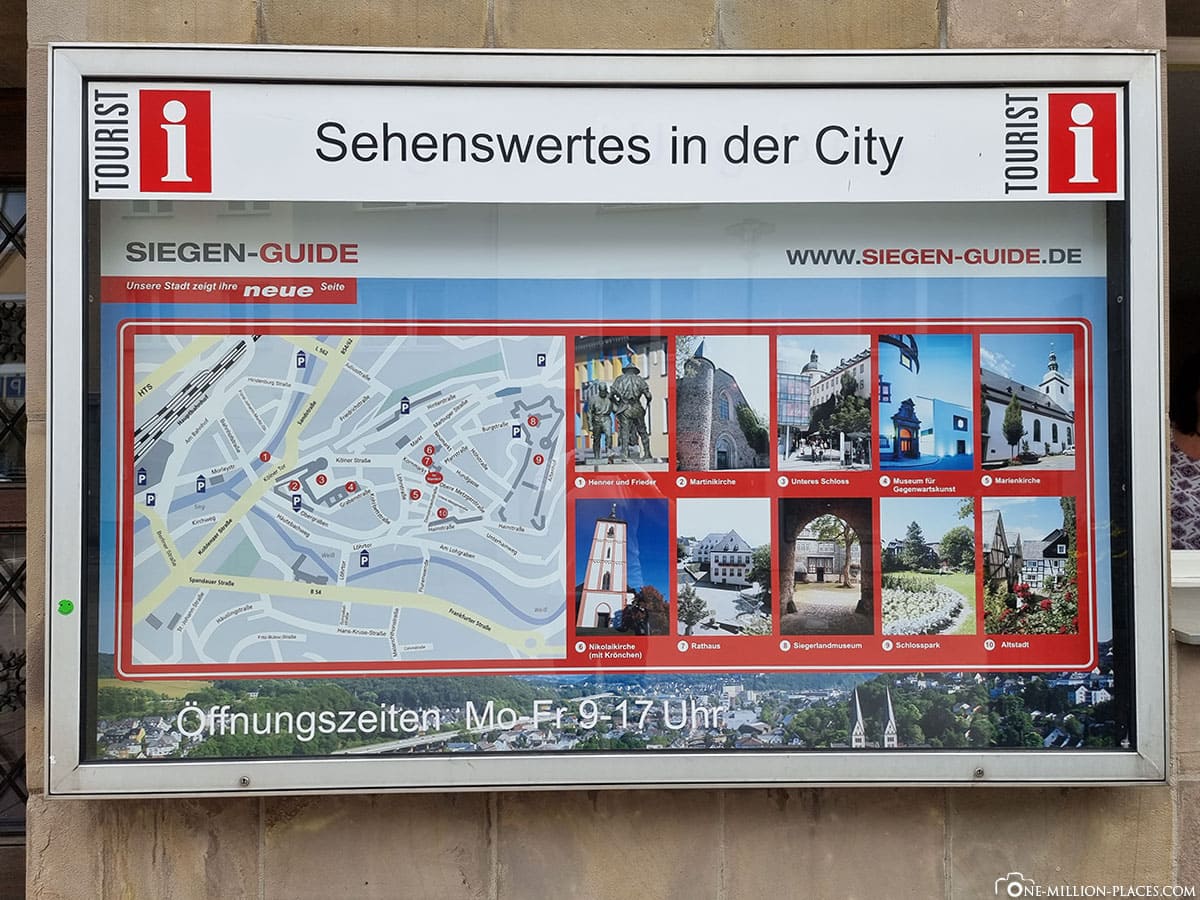After our visit to the half-timbered town of Freudenberg, we took a tour of the city of Siegen, which is only about 15 kilometers from Freudenberg. The city in the Siegerland impresses with a historic city center, 2 castles and a church with an attached crown of gold.

Table of contents
Things to know about the city of Siegen
The city of Siegen has 100,000 inhabitants and is located in the state of North Rhine-Westphalia in the border triangle to the neighboring federal states of Hesse and Rhineland-Palatinate. The city is located in the middle of a green hilly landscape in an extensive valley basin. Directly through the city center flows the eponymous river Sieg, the name “Sikkere” is of Celtic origin and means as much as “fast river”.
The oldest documentary mentions of the city of Siegen date back to the 11th century. Already in the Middle Ages, the city had a mighty city wall with 16 towers and three large city gates. Unfortunately, there is not much left of it today. During the Second World War, around 80 percent of the city was destroyed and a few historic buildings such as the two castles (the Upper and Lower Castles) and several church buildings have been preserved.
We found it interesting that according to an evaluation of Germany-wide satellite images of inner-city green spaces, the university city of Siegen is the greenest city in Germany. The highest elevation is with 499 meters height the Pfannenberg, which is located on the southern city limits. In addition, Siegen is also the birthplace of the Baroque painter Peter Paul Rubens, which is why the city also has the nickname “Rubensstadt”.
The Old Town
We started our city tour in the old town of Siegen, which was the most beautiful part of the city for us. Here you will find many narrow streets with small slate-roofed half-timbered houses, most of which were lovingly restored in the 80s. The historic city centre is bordered by the Upper and Lower Castles.
The Upper Castle & the Castle Park
The Upper Castle is located on the 307 m high Siegberg, whose complex dates back to a medieval hilltop castle from the 13th century. Its greatest flowering reached the castle in the 17. and 18th century, when it was the residence of the Counts and Princes of Nassau-Siegen.
The castle has been rebuilt and expanded several times since its inception. The oldest part, the so-called Bishop’s House, includes the four-storey gatehouse with barrel-vaulted passage, a massive residential tower of four storeys and the three-storey main building. In 1888, the city acquired the Upper Castle and in 1905 established the Siegerland Museum, a museum for regional history.
We walked a little through the castle complex and then visited the castle park, which occupies the largest part of the castle property in terms of area. From the viewpoint “View into the Hüttental” you have a fantastic panoramic view over the Hüttental.
The Nikolaikirche on the market square
On the market square, next to the town hall, is the Nikolaikirche, built in the 13th century. The 53-meter-high church tower of the Nikolaikirche bears the landmark of the city of Siegen with the “Krönchen”, a crown made of iron forged and gilded with a diameter of over two meters from the 17th century.
The Lower Castle
After the division of the House of Nassau-Siegen into a Catholic and a Protestant line, both re-planned their residences. The Catholic line moved into the already existing castle on the Siegberg, which is now the Upper Castle. The Protestant line decided in 1668 for a complete new building in the city center of Siegen, today’s Lower Castle. Since 2016, the castle has been used by the University of Siegen.
More Sights & Photo spots
During our tour through Siegen we were able to discover other sights, such as the Museum of Contemporary Art, the Martini Church and the sculptures of a miner (“Henner”) and a hut man (“Frieder”). In total, we spent about 4 hours in the city.

